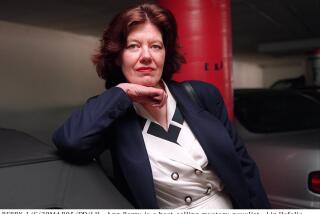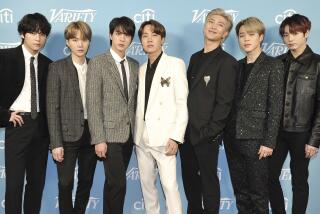MING, CHING, LEI AND LU
The review of my book “The Pacific Century” by Robert Elegant (Nov. 1) was on the whole very gracious. I note, however, that Elegant, in the manner of some reviewers, saw fit to admonish me for a variety of “disturbing factual errors” which I did not make. With one exception, his corrections are incorrect.
To begin with, Elegant taxes me for locating the Emperor Qianlong in the Ming Dynasty, not the Manchu Qing. He should have read more closely. I identified Qianlong as both a Qing and a Manchu Emperor. He then reproaches me for saying that the Ming Dynasty had moved the capital of China from Beijing to Nanjing, where in point of fact the Mings had brought the capital to Beijing. Here we are both right. The Mings, who began their rule in 1368, first set up their capital at Nanjing, in contrast to their Yuan predecessors who had ruled from Beijing. The Ming Court later moved back to Beijing, but that was in 1421, 53 years later.
Elegant pointed out that I had “implicitly” said that Mao Zedong was not at the founding of the Chinese Communist Party. Not true. I didn’t say whether he was there or not. My point was simply that it was two other people, Chen Daxiu and Li Dazhao, not Mao, who were the real founders of the party. At the party’s founding he was by no means the important fellow he became later.
I am also taken to task for my comments about the excessive use of sloganizing by Chinese Communists, in the examples “Learn from Dazhai”. Elegant points out that Daqing and Dazhai were names of places, not people. Of course they are! Any one who has ever visited China or has the most elementary knowledge of the language knows that they are places. I was using all three as “cases” of allegedly industrious workers. Lei Feng’s case was individual, but Chinese officials elsewhere used place names like Dazhai to commemorate the activities of the people working there. It would have taken the punch out of the slogan to say “Learn from the socialist workers of Dazhai,” etc. About Shaoxing, Elegant’s correction was correct. Lu Xun’s city lies in south or central China, not north China, as I mistakenly wrote. (I have visited there, but neglected to bring my compass with me at the time.)
Elegant’s nit-picking score is thus only one for four, which hardly qualifies him for the majors. I have always been impressed by his prodigious knowledge of China, and I forgive him for missing the central point that “The Pacific Century” is a thematic and purposefully not a chronological treatment of the American relationship to East Asia, as it has developed and changed. But I do feel that it is a little much to correct authors for mistakes they did not make.
FRANK B. GIBNEY
SANTA BARBARA
Elegant replies: A photo caption identified Qianlong as a Ming emperor. Never having had their capital at Beijing, I don’t see how the Ming could have moved it thence to Nanjing; this point is really quibbling on both our parts.
I did not quarrel with Gibney’s observation that Mao Zedong did not spring fully armed and omniscient from the brow of the old China; my point was simply that Mao was present at the founding Congress of the CCP, while the two older men you put there were not. I wholly agree with his observation on the sloganeering of the Chinese Communists. However, there must surely be a more felicitous way not to muddle people and places.
More to Read
Sign up for our Book Club newsletter
Get the latest news, events and more from the Los Angeles Times Book Club, and help us get L.A. reading and talking.
You may occasionally receive promotional content from the Los Angeles Times.






